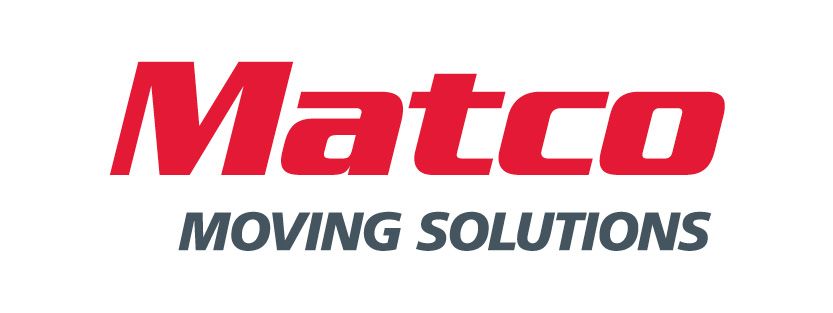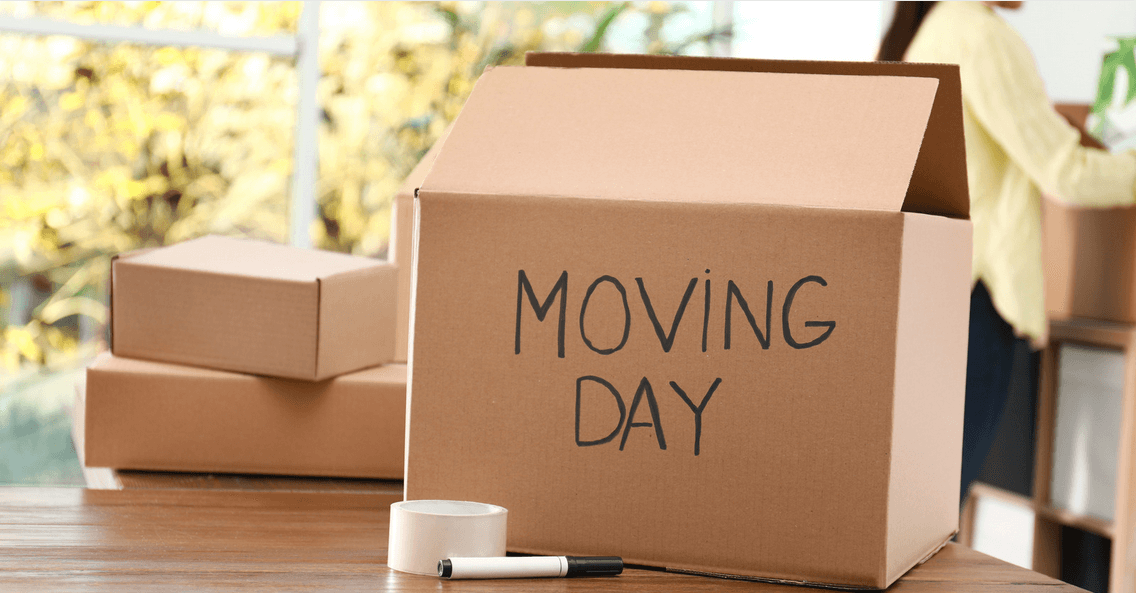In this post, we delve into Replacement Value Protection, a comprehensive protection for your belongings against loss, damage, or theft during transit.
In the formidable task of transitioning from one home to another, we entrust our most valuable possessions to the care of moving companies. This change can often come with anxieties about the safety and security of our belongings. Replacement value protection (RVP) becomes a pivotal aspect of this process, offering peace of mind that our items are protected should an unforeseen incident occur. Understanding the nuances of this type of protection is crucial for anyone preparing for a move, as it illuminates the risks involved and safeguards your possessions from loss, damage, or theft.
Selecting the right moving company and coverage policy isn’t just a good idea; it’s necessary in today’s unpredictable world, where accidents or mishaps can happen at any turn. In this blog, we’ll delve into the importance of moving company RVP, outlining why it’s not merely an optional add-on but a fundamental component for a secure and stress-free move. As we unpack the specifics, you’ll learn how different coverage plans function, what is typically covered, the types of policies available, and how to ensure you have adequate protection for your belongings during the often turbulent relocation journey. Whether you’re moving across town or the country, the right moving company coverage plan can make all the difference in preserving and protecting your property.
Understanding Replacement Value Protection (RVP)
Moving company Replacement Value Protection is a specialized coverage designed to protect your belongings during moving. This protection typically covers losses or damages while your items are packed, loaded, transported, and unloaded by a moving company. With a proper RVP policy in place, customers have the assurance that their items are financially safeguarded against a range of incidents, including accidents, natural disasters, or even theft. It is essential to distinguish between moving company RVP and the basic liability coverage most movers offer by default, as the latter may offer only minimal protection. By understanding the definition and scope of moving company RVP, individuals can make informed decisions regarding the level of coverage they need.
When You May Need Replacement Value Protection (RVP)
The moving process is inherently risky, with potential damage or loss at every stage. Items might be mishandled, boxes can tumble in the truck during transit, or a sudden storm may drench your valuables. This section will highlight the importance of moving company RVP through common risks encountered during relocation, real-life scenarios that underscore its necessity, and the financial repercussions of uninsured moving losses.
Common Risks During the Moving Process
Despite the best efforts of professional movers, several common risks could lead to the loss or damage of your belongings. These include handling accidents, collisions, or issues caused by improper packing. Additionally, items could be lost during shipping, especially long-distance moves, or damaged due to unexpected weather conditions.
When Replacement Value Protection is Crucial
Consider a scenario where a moving truck is involved in an accident, damaging your antique furniture, or imagine discovering that a treasured family heirloom has vanished somewhere during transit. Replacement Value Protection is integral in these situations, providing financial cover and helping you replace or repair your lost or damaged items without bearing the total cost.
The Cost of Moving Losses
The financial burden of moving losses without Replacement Value Protection can be substantial. Without coverage, individuals may pay out of pocket for repairs or replacements. This can be particularly distressing when dealing with valuable or irreplaceable items. Moreover, the emotional cost of losing cherished possessions can compound the financial loss, making RVP a wise investment for securing your belongings’ monetary value and peace of mind.
Different Types of Coverage
Released Value Protection: The basic coverage is typically included in the moving service without extra cost but offers minimal protection. Under this plan, the moving company is only responsible for a fraction of your belongings’ total value based on weight. While this may not provide adequate coverage for valuable items, it could suit those with budget constraints or less valuable possessions.
Replacement Value Protection (RVP): A more comprehensive coverage option offering enhanced protection for your possessions. While it may incur additional costs, it ensures better safeguarding your belongings during the move. With this choice, the moving company takes responsibility for repairing or replacing damaged items. If replacement is not feasible, you receive compensation equivalent to the item’s cash value at the time of loss. This type of moving coverage, favoured by long-distance movers, is widely recommended for its reliability and peace of mind.
Third-Party Moving Insurance Options: Long-distance moving companies may offer third-party options. This involves buying a separate policy from a different insurance provider for added coverage, which is ideal for protecting high-value items. Your home insurance might also cover some belongings during the move; verify the coverage with your home insurance provider.
Limitations and Exclusions
When opting for coverage, it is imperative to be mindful of certain limitations and exclusions that may affect the plan(s). Most policies do not cover items of extraordinary value unless specifically listed and valued in the agreement. Additionally, coverage might not extend to goods packed by the owner (PBO), as the moving company cannot verify the packing’s integrity. Natural wear and tear, inherent vice, or mechanical failures unconnected to the mover’s handling are also typically excluded. Understanding these constraints is crucial for avoiding unpleasant surprises in the event of a claim, ensuring you are adequately prepared and protected.
Matco’s Replacement Value Protection Exclusions
Replacement Value Protection coverage excludes the following items:
- Documents include accounts, bills, deeds, passports, tickets, money, stamps, and precious collections.
- Loss or damage from inherent vice, wear and tear, gradual deterioration (except due to improper storage), war, invasion, or contamination by radioactive material.
- Loss of market value to repaired items like antiques and works of art and tertiary losses like computer downtime or emotional value items.
- Costs like phone calls, travel time for claims, and damage liability if the carrier fails to certify servicing at origin.
- Damage from road vibration is due to improper packing and the carrier’s exclusion of liability if no blocking kit is provided for front-loading washers.
Non-Admissible and Hazardous Materials
Knowing the non-admissible and hazardous materials that cannot be transported due to safety regulations is crucial when planning a move. These items pose significant risks during the moving process and are generally prohibited by moving companies.
Flammable Materials
Any material that is capable of being easily ignited and of burning quickly is considered flammable and poses a fire hazard, including:
- Adhesives (e.g., glues, cement)
- Ammonia
- Aerosol cans (e.g., hair spray)
- Charcoal briquettes
- Denatured alcohol
- Gasoline
- Lighter fluids
- Matches
- Propane tanks
Gases, Compressed
Items charged with compressed gases are considered hazardous:
- Engine starting fluids
- Fire extinguishers
- Gases used for welding
Combustible Liquids
These include chemical compounds or mixtures with explosive components that ignite spontaneously under heat or that decompose rapidly, leading to combustion:
- Alcohols
- Anti-freeze compounds, camphor oil
- Disinfectant-type cleaners (fluids containing combustible materials such as spot clothing cleaners, office machine liquid cleaners)
Corrosive Liquids
Materials causing visible destruction or permanent changes to the skin or, if leaked, severe corrosion to other materials:
- Etching acid
- Iron/steel rust-preventing compounds
- Muriatic Acid
- Nitric Acid
- Sulphuric Acid
- Rags soaked in corrosive substances
It is essential for individuals moving to consult their moving company for a comprehensive list of non-admissible items and ensure they are not packed or shipped, for they pose a severe risk and can lead to legal liability.
Handling Excluded Items During a Move
When dealing with items that fall under exclusions or cannot be covered by standard RVP, it’s essential to take additional steps to ensure their protection. Here are some valuable tips:
- Third-Party Moving Insurance Options: Consider purchasing third-party insurance for valuable items like jewelry, antiques, and collectibles. Specialty insurers often provide policies designed for high-value or fragile items that moving companies may not fully cover.
- Personal Care and Transportation: For items packed by the owner (PBO) excluded from coverage, consider moving them personally. If you’re flying, small, valuable items can often be transported in your vehicle or as a carry-on item.
- Appraisal and Inventory: Obtain professional appraisals for high-value items and make detailed inventories, including photographs and descriptions. This can aid in the claims process if third-party moving insurance is in place or a dispute arises with the moving company’s coverage.
- Special Packing Materials: Invest in high-quality packing supplies for fragile or valuable items. Specialty boxes, custom crating, and high-grade padding materials can provide additional protection during the move.
- Documentation and Proof of Condition: Keep purchase receipts, appraisals, and photos of valuable items to document their condition before the move. This proof is invaluable if you file a claim with a third-party insurer.
- Direct Handling of Sensitive Items: If possible, carry private and sensitive documents like passports, legal papers, or personal collections to ensure their safety and confidentiality.
By taking these protective measures, you can gain peace of mind, knowing that even excluded items are given special attention and have a greater chance of arriving at your new home safely and securely.
Tips for a Smooth Move

Ensuring a smooth and secure move involves careful preparation. Beyond selecting the proper coverage plan, you can take several practical steps to protect your belongings throughout the relocation process.
Preparing Your Belongings for a Safer Move
Preparation is the first step toward a safer move. Before packing, purge items you no longer need to reduce the load. Use sturdy, high-quality packing materials and boxes for each item’s weight. Fragile items deserve particular attention—wrap them with bubble wrap and secure them within the boxes with packing peanuts or crumpled paper.
Essential Packing Tips to Minimize Damage Risk
Pack heavier items at the bottom of boxes and lighter ones on top to minimize damage risk. Label each box with its contents and the room it’s destined for. Use “Fragile” stickers or labels for boxes containing delicate items. Additionally, disassemble furniture where possible to prevent damage and make transport easier. Finally, ensure all boxes are sealed tightly to avoid content movement during transit.
Following these steps improves the chances of your belongings arriving at their new destination in the same condition as when they left, making for a stress-free move.
Choosing the Right Coverage Plan
Selecting the appropriate coverage plan for your move is critical to protect your possessions during the transition. To properly assess your protection needs, consider the value of your belongings and whether they include high-worth items or heirlooms that would be difficult to replace. Inventory your possessions and determine what type of protection will provide you with the most comfort and security for all your large and small items.
When engaging with moving companies, clarify their coverage policies by asking key questions:
- Can you explain the differences between the different levels of coverage plans you offer?
- What is the process for filing a claim for damage or loss?
- Are there any limits to the coverage provided, particularly for high-value items?
- Will the selected plan cover all move phases, including storage and transportation?
- How does your released value protection differ from complete value protection regarding cost and coverage?
In addition to moving company insurance coverage policies, the role of personal homeowners’ or renters’ insurance cannot be overlooked. These policies may provide additional coverage for your belongings while in transit. It’s essential to contact your insurance provider to understand the extent of the coverage, any conditions that apply during the move, and if supplemental coverage might be necessary. This comprehensive approach ensures that every valuable is appropriately safeguarded, protecting your belongings completely.
Conclusion
Securing adequate moving company coverage is crucial for the peace of mind and protection of your belongings during relocation. The potential risks of moving are unpredictable, ranging from accidental damage to unexpected loss. Having a suitable protection plan, such as the Replacement Value Protection plan, ensures that you are financially safeguarded should such incidents occur. As you prepare for your move, take the time to fully understand the various coverage options available to you, including both moving company policies and third-party moving insurance. Investing in the right coverage is not just about protection—it’s about the comfort and confidence you gain, knowing your valued possessions are covered at every step. Accidents may happen, but the proper coverage and plan will significantly lessen their impact on your move.


